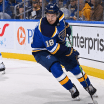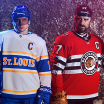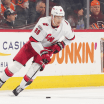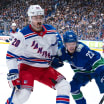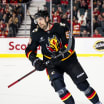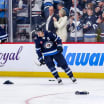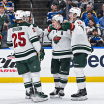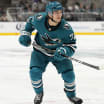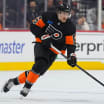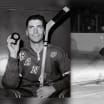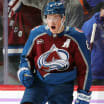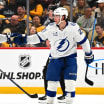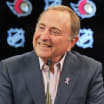Legendary hockey reporter Stan Fischler writes a weekly scrapbook for NHL.com. Fischler, known as "The Hockey Maven," shares his humor and insight with readers each Wednesday.
This week, Fischler turns the calendar back to the first NHL game played in the United States, 98 years ago.
Bruins won first NHL game played in United States in 1924
Physical style became trademark, called 'hockey of the thrilling type'
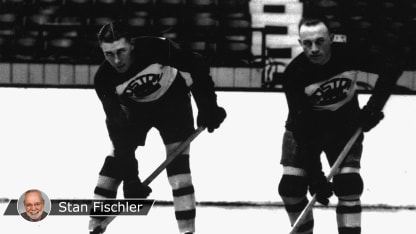
By
Stan Fischler
Special to NHL.com
It was the dawn of a new era for the National Hockey League.
For its first seven seasons, the NHL was a compact fraternity of Canadian teams. But in the fall of 1924, NHL president Frank Calder welcomed the first American franchise, the Boston Bruins.
The NHL expanded to six clubs, including a second frachise from Montreal, the Maroons joining the Canadiens. Toronto, Ottawa and Hamilton were the other cities with teams in the NHL. On Oct. 12, 1924 the two new teams were officially given a green light to play a 30-game season beginning Nov. 29.
The Bruins owner -- New England grocery magnate Charles Adams -- chose respected hockey mogul Art Ross to manage and coach the Bruins. Their home would be Boston Arena, built in 1910 -- and rebuilt after a fire in 1921 -- with a capacity of about 5,000, including standees.
"Ross had a limited amount of time to build a roster," said historian Jeff Miclash, who recently published Total Bruins, a detailed account of the franchise's early days. "He mainly signed players from the Pacific Coast Hockey Association and many were well past their prime. It was especially hard for him to find good defensemen."
Ross's biographer, Eric Zweig, reported that the Bruins manager-coach had arranged an exhibition game against the Saskatoon Sheiks before the their NHL debut on Dec. 1 at Boston Arena.
"Ross told reporters he felt the Saskatoon team would be a good test since, in many respects, it was stronger than many of the NHL teams," noted Zweig. "They boasted future Hall of Famers Bill and Bun Cook, Harry Cameron and George Hainsworth."
When the Bruins received their uniforms and assorted equipment, a few players were surprised with the team's uniform -- brown with gold stripes on the sleeves and socks. But there was a good reason for the color scheme -- it happened to be the owner's favorite colors.
"The magnate's four thoroughbreds were brown, his 50 stores were brown along with his Guernsey cows," Zweig wrote. "Furthermore, brown was the predominating color among his pigs and his Rhode Island hens also were brown."
Prior to the Bruins exhibition game against the Sheiks, Ross had his new team practice at Boston Arena where large crowds showed up for a preview of their new pro team. The press was there as well and generally approved of what the new product had to offer.
"Ross demands that his players be in the best physical condition," The Boston Globe reported. "It means hockey of the thrilling type."
Except for the final result, the exhibition game against Saskatoon was successful. A near capacity Arena crowd saw the home team put up a good fight before losing 2-1.
Respected Toronto Star sportswriter Lou Marsh was impressed.
"Boston seems to look by far the best," Marsh said. "Ross is a wise old canary. He's gathered a combination of amateur stars and experienced pros."
The first regular-season game on Dec. 1, 1924 received big play in the local dailies, yet despite heavy press coverage, the crowd fell short of the capacity.
As for the game itself, it was a thriller that had the crowd on edge thanks to robust hitting and the fact that the new franchise held its own. The Maroons took the lead midway through the first period but the Bruins -- with a heavier, more aggressive squad -- took command in the middle period.
Boston forward Smokey Harris tied the game on a pass from Carson Cooper and in the same period, Cooper potted the second -- and game-winning -- goal.The Bruins held on for a 2-1 win and established an intimidating image that would be the team's template for decades ahead.
The Boston Post's headline set the tone: BRUINS BETTER IN ROUGHHOUSE GAME -- PLAYERS CONSTANTLY PUT OFF FOR ROUGHING IT. A few players were accused of using "football tactics."
Writing in the Boston Herald, Stanley Woodward appreciated what he termed "a fast, rough game" with "surprisingly rugged body checks and two near fights."
On the other hand, a somewhat dubious John Hallahan of the Boston Globe raised a compelling question that merited an eight-column headline: IT IS HARD TO SAY JUST HOW WELL PROFESSIONAL HOCKEY WILL GO IN THIS CITY.
"There was keen competition from amateur hockey," Miclash explained. "The amateurs had been very popular. Between top-notch local and college league games there was plenty of hockey to go around.
"One of the real concerns posed by the Bruins was whether NHL hockey would lead to the demise of the amateur ranks. But Ross did his best to calm fears that the best of the non-pros wouldn't be poached."
Unfortunately, the Bruins followed their opening win with 11 straight losses. One reporter observed that "they played more like teddy bears than Bruins." Nevertheless, the newcomers developed a devoted fan base known as "Pecans" who loved their Bruins despite the sorrowful season.
Or, as Ross quipped, "In the first year I had three squads -- one playing, one coming and one going."
Encouraged by the Bruins ability to weather the first season, the NHL granted Pittsburgh a new franchise for 1925-26. And Hamilton was transferred to a brand-new 15,000-seat Madison Square Garden and renamed the New York Americans.
Meanwhile, Ross made good on his promise to build a winner. From its dismal opening season record of 6-24-0, a year later the Bruins climbed to 17-15-4. Two of the original Bruins, Cooper and Jimmy Herberts, thrilled the growing fan base by finishing second and third in NHL goal scoring.
"That opening night game -- almost a century ago -- had a lot to do with the franchise's long-term success," reflected Miclash. "It showed what it was that sold big-league hockey to the public -- speed and roughness!"
